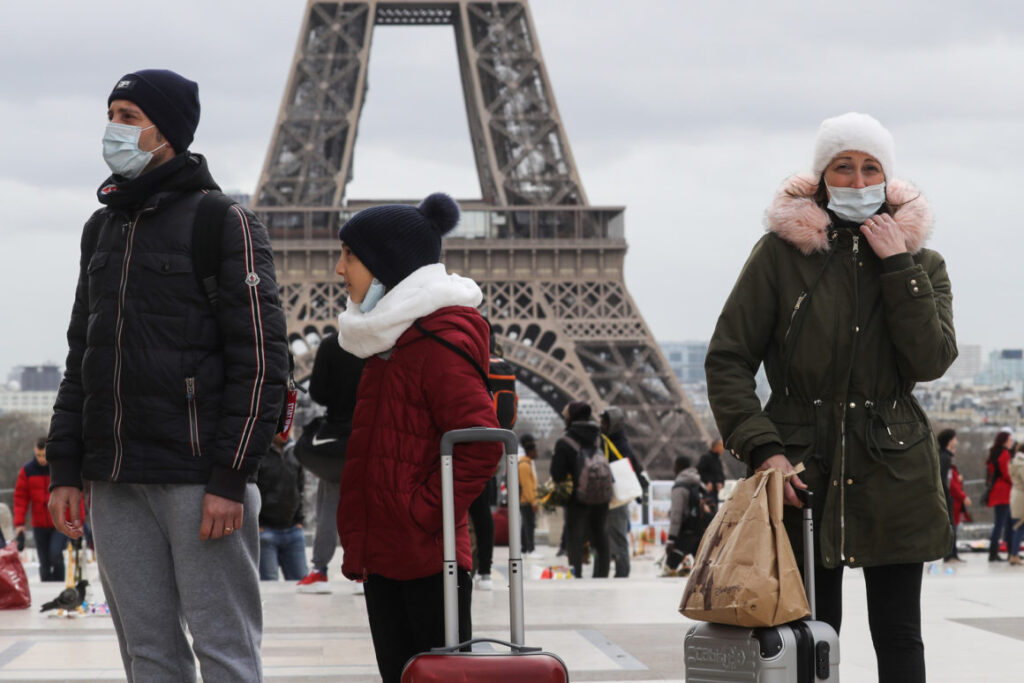Countries all over the world have seen the effects of the coronavirus’ second surge. These countries are quickly trying to stop the spread for the second time; most of whom have re-established restrictions enforced during the beginning of 2020. Some nations have been more successful than others at slowing the second wave. Read below to learn the rules and regulations that numerous governments are enforcing in their countries to stop the second wave from continuing to spread. All amounts of coronavirus cases and deaths are as of October 14th at 11:45am EST.
The United States of America
Within the week of October 5th to October 12th, there was an increase in the weekly amount of coronavirus cases recorded in 36 states; resulting in 50,000 new daily cases. This enormous number is still not as detrimental as the number of daily cases in July averaging at 66,000.
Of these 36 states, 16 of them recorded their highest weekly number of cases that week compared to any other week throughout the pandemic. The states with the most confirmed cases are primarily located in the northern and central Midwest.
By the 14th of October, Illinois had reported over 9,000 deaths. However, between the dates of October 5th and October 12th, North Dakota and South Dakota had reported the most confirmed cases in the nation, followed by Montana and Wisconsin. Throughout the duration of the week, North Dakota averaged 727 daily new cases, while South Dakota averaged 721 daily cases. Montana averaged 570 daily cases, and Wisconsin averaged 468 daily cases.
Of the United States’ top 20 metro areas with the highest rates of recent coronavirus cases, 10 of those areas are located in Wisconsin. The state of Wisconsin is preparing an emergency field hospital at the state fairgrounds. Wisconsin governor, Tony Evers, wrote in a letter to legislative leaders, “While we are hopeful we can flatten the curve enough to never have to use the facility, Wisconsinites across our state are struggling and they are rightfully scared of this virus.” The governor wrote the letter to the legislative leaders in search of their support of his mandating masks and limiting public gatherings restrictions.
On Tuesday, October 13th there were 820 coronavirus deaths and 54,500 new cases in the United States. Of these cases, Idaho and Wisconsin recorded their highest number of daily cases throughout the entirety of the coronavirus pandemic.
The United States leads the rest of the world in the number of COVID-19 cases and deaths. Out of the 328.2 million Americans, (recorded in 2019) 7,745,607 people have tested positive for the virus resulting in 214,271 deaths.
The United States’ updated rates of coronavirus cases and deaths.
Brazil
Brazil has the second highest rate of COVID-19 related deaths in the world. With the population of the country (recorded in 2018) totaling at 209.5 million, there have been a totally of 150,689 deaths and 5,103,408 confirmed cases. Even though the country has less deaths then the United States, the number of COVID-19 related deaths compared the number of COVID-19 confirmed cases in Brazil results in the country maintaining the highest death rate of any country in the world.
Brazil’s coronavirus death rate is at 71.9 followed by Mexico at 66.5, then America with a death rate of 65.6. Following the United States and Brazil with the most deaths due to the virus is India with the third most deaths, followed by Mexico, then the United Kingdom, and Italy.
Brazil’s updated rates of coronavirus cases and deaths.

India
Behind America, India maintains the second highest number of confirmed coronavirus cases. With the most cases in Asia, India with a population of 1.353 billion residents (recorded in 2018) reported a totally of 7,175,880 confirmed cases. Even with the second highest number of confirmed cases in the world, India has maintained a relatively low death rate with a total of 109,150 deaths. As a result India maintains a COVID-19 death rate of 8.1 with signs of the number of deaths beginning to decrease.
India’s updated rates of coronavirus cases and deaths.
Israel
Israel is under a new national lockdown preceding a record breaking number of daily cases in the country. The lockdown was set to be reviewed on October 14th and is expected to be gradually lifted over a period of time.
Israel’s updated rates of coronavirus cases and deaths.

South Africa
South Africa makes up 57.78 million (recorded in 2018) of the continent’s 1.216 billion person population (recorded in 2016). Of the 57.78 million people about 700,000 South Africans have contracted the coronavirus resulting in a total of 18,000 deaths. Due to these confirmed COVID-19 cases and deaths, South Africa has been hit the hardest by the coronavirus compare to every other country in Africa.
Two other hard-hit countries in Africa are Morocco and Egypt. Morocco maintaining a population of 36.03 million (recorded in 2018) and Egypt with 98.42 million residents, (recorded in 2018) both countries have confirmed over 100,000 positive coronavirus cases each.
South Africa’s updated rates of coronavirus cases and deaths.
Morocco’s updated rates of coronavirus cases and deaths.
Egypt’s updated rates of coronavirus cases and deaths.

France
On Saturday, October 10th, the areas of Lyon, Lille, Grenoble, and Saint-Etienne were put under maximum alert. Maximum alert is established when a region of France exceeds 250 positive cases for every 100,000 people. An example of the restrictions enforced under maximum alert are the closing bars and restaurants. Paris went under maximum alert during the beginning of the week; while Marseille underwent maximum alert in September.France
France has established a maximum capacity on the public gatherings to a total of 10 people. Wedding receptions and other organized gatherings have been banned until further notice. Facemasks have been made mandatory, whether inside or outside, for children over the age of 10 in Paris and other neighboring areas. Different regions of France have also begun enforcing their own rules.
France’s updated rates of coronavirus cases and deaths.
Netherlands
Starting on October 14th at 10:00pm new restrictions have been emplaced throughout the Netherlands to prevent the spread of COVID-19. The country had recently seen the highest number of confirmed positive cases since the start of the pandemic.
The Netherlands will be undergoing the following restrictions starting October 14th for a minimum of four weeks:
- Bars and restaurants will only be providing takeout services.
- The distribution of alcohol from bars and restaurants must end by 8:00pm.
- Alcohol may not be consumed in public past 8:00pm as well.
- All stores, except for food stores, must close by 8:00pm.
- A maximum of three people may visit the same home daily, with a maximum of four people being allowed to meet outside of the home.
- All outdoors and indoors events and large gatherings have been banned.
The Dutch government is encouraging their citizens to continue to obey the facemask and social distancing regulations that have been emplaced. However, schools, gyms, pools, and saunas remain open for children under 18 to continue competing and training in amateur sports.
The Netherlands’ updated rates of coronavirus cases and deaths.

Spain
On Friday, October 9th, Madrid, Spain declared a 15-day long state of emergency. The city officials challenged the government stating that the shutdown is unjustified because the number of coronavirus cases is decreasing. The shutdown is being enforced by 7,000 police officers.
About 5 million people living inside, as well as outside, of Madrid are affected by the shutdown. The state of emergency consists of restrictions such as:
- No one may enter or leave the city of Madrid except for school or work.
- Hotels may hold up to a maximum of 50% capacity and must close by 11:00pm.
- Businesses are limited to 50% capacity and must close by 10:00 pm
- Religious gatherings may only can have a maximum of one third of the normal capacity.
Catalan authorities demanded that all restaurants and bars are to close their inside and outside dinning for two weeks, from October 15th until at least October 29th. These restaurants and bars may only provide their services for takeout.
Spain’s updated rates of coronavirus cases and deaths.
Other European Lockdowns
Many other countries in Europe are beginning to enforce greater restrictions on their citizens in an attempt to slow the spread of the coronavirus’ second wave. Some of these countries consist of Germany, Italy, Denmark, Belgium, Portugal, Greece, the Republic of Ireland, etc.
Some precautions that these countries have begun enforcing are curfews, banning organized gatherings, and enforcing a maximum capacity for the amount of people that may gather privately. Some larger cities within these countries have begun enforcing their own harsher restrictions due to their higher populations and difficulty to enforce social distancing.
Unlike almost all of the other countries in Europe, Sweden has not enforced strict lockdown rules. All of the stores, restaurants, bars, and gyms have remained open. The citizens of Sweden have voluntarily respected the social distancing rules and working from home as much as possible. The country has banned gatherings over 50 people, however the government has decided to leave businesses open and to not enforce the need to wear a mask.
Germany’s updated rates of coronavirus cases and deaths.
Italy’s updated rates of coronavirus cases and deaths.
Denmark’s updated rates of coronavirus cases and deaths.
Belgium’s updated rates of coronavirus cases and deaths.
Portugal’s updated rates of coronavirus cases and deaths.
Greece’s updated rates of coronavirus cases and deaths.
The Republic of Ireland’s updated rates of coronavirus cases and deaths.
Sweden’s updated rates of coronavirus cases and deaths.











More Stories
U.K. government faces lawsuit over mistreatment of autistic people